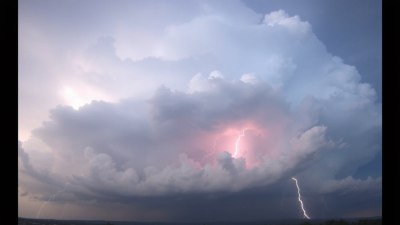How Subtle Changes in Sunlight Affect Clouds and Winds
Discover the intricate relationship between sunlight, clouds, and winds, and how subtle changes can affect weather patterns.

Image by rawpixel-com on Freepik
Understanding how subtle changes in sunlight affect clouds and winds is crucial for grasping the dynamics of our atmosphere. Sunlight is not merely a source of light and warmth; it is a driving force behind various meteorological phenomena. The interplay between sunlight, clouds, and winds shapes our weather, influences climate, and plays a significant role in ecological systems. This article delves deep into the mechanisms through which sunlight influences atmospheric conditions, with a focus on clouds and winds.
The Role of Sunlight in the Atmosphere
Sunlight reaches the Earth's surface in the form of solar radiation. When this radiation interacts with the atmosphere, it can lead to various outcomes, including the formation of clouds and the generation of winds. Solar radiation can be divided into three categories: visible light, ultraviolet (UV) light, and infrared (IR) radiation. Each of these types of radiation has different effects on atmospheric processes.
Visible light is essential for photosynthesis, driving the growth of vegetation, which in turn affects local climates. UV radiation, while harmful in excessive amounts, plays a role in the formation of ozone, which protects living organisms from the sun’s harmful rays. Infrared radiation, emitted by the Earth, helps in regulating temperatures. The balance between incoming solar radiation and outgoing thermal radiation is fundamental for maintaining the Earth’s energy budget.
The Formation of Clouds
Clouds form when water vapor in the atmosphere cools and condenses into tiny water droplets or ice crystals. This process is heavily influenced by solar radiation. When sunlight heats the Earth's surface, it causes water from oceans, lakes, and rivers to evaporate, increasing humidity levels. As the air warms and rises, it cools at higher altitudes, causing the moisture to condense and form clouds. The temperature and humidity layers in the atmosphere play a critical role in this process, and even subtle changes in temperature due to sunlight can significantly alter cloud formation.
There are several types of clouds, including stratus, cumulus, cirrus, and nimbus clouds, each formed under different conditions influenced by sunlight. For instance, cumulus clouds, which are typically puffy and white, form when warm air rises quickly due to strong solar heating. In contrast, stratus clouds, which are more uniform and cover large areas, can form under conditions of weak solar heating and when moist air settles.
The Impact of Cloud Types on Local Weather
Different types of clouds influence local weather patterns significantly. Cumulus clouds often indicate fair weather, while nimbus clouds can signal rain or storms. When sunlight heats the Earth's surface unevenly, such as in areas of varying topography or land use, it can create localized updrafts that lead to the development of cumulus clouds. As the sun sets and temperatures drop, these clouds can dissipate, causing shifts in local wind patterns.
Moreover, the altitude at which clouds form can affect their interaction with sunlight. Low-level clouds can reflect sunlight, leading to cooler temperatures at the surface. In contrast, high-altitude clouds, such as cirrus clouds, allow sunlight to penetrate, potentially warming the surface underneath. Changes in cloud cover can thus create feedback loops that amplify or mitigate warming effects.
The Connection Between Sunlight and Winds
Winds are another atmospheric phenomenon intricately related to sunlight. The uneven heating of the Earth’s surface by the sun creates pressure gradients in the atmosphere. Warm air is lighter and rises, creating areas of low pressure, while cooler air sinks, creating high-pressure zones. This difference in pressure leads to wind as air moves from high to low-pressure areas.
The strength and direction of winds can be affected by cloud cover. For instance, during the day, increased sunshine can elevate surface temperatures, resulting in stronger updrafts and winds. Conversely, at night, when clouds trap heat, temperatures may remain elevated, reducing wind speed. Changes in cloud formations throughout the day can, therefore, influence local wind patterns.
Seasonal Variations in Solar Radiation
The changing seasons also impact how sunlight interacts with clouds and winds. During summer months, the sun’s angle is more direct, leading to intense heating of the Earth’s surface, which in turn affects wind patterns and cloud formation. Thunderstorms are more common in summer due to the combination of high humidity and intense solar heating, which creates strong updrafts. In contrast, winter months often see lower angles of sunlight, resulting in less energy to heat the surface and consequently fewer clouds and calmer winds.
Furthermore, the seasonal variations in sunlight also contribute to the formation of weather fronts. For instance, the contrast between warm and cool air masses during transitional seasons like spring and fall can lead to significant weather changes, including storms and shifting wind patterns.
The Influence of Geographic Location
Geographic location also plays a vital role in how sunlight affects clouds and winds. Areas near the equator receive more consistent sunlight throughout the year, resulting in more stable weather patterns and often abundant cloud formation. In contrast, polar regions experience extreme variations in sunlight, leading to distinct weather phenomena, including polar vortexes and persistent cold fronts.
Additionally, coastal areas are influenced by the interaction between land and sea breezes, driven by differential heating. During the day, the land heats up faster than water, causing warm air over land to rise and draw in cooler air from the ocean, creating wind. This phenomenon is reversed at night, leading to changes in wind patterns influenced by cloud cover and solar radiation.
Climate Change and Sunlight
Climate change adds another layer of complexity to the relationship between sunlight, clouds, and winds. As global temperatures rise, the amount of water vapor in the atmosphere increases, potentially leading to more intense weather phenomena. The interaction between increased humidity and sunlight can alter cloud properties, affecting how much sunlight is reflected back into space or absorbed by the Earth. Changes in cloud coverage have implications for global temperatures, as high cloud cover could trap heat while low cloud cover can lead to cooling.
Moreover, the alteration of wind patterns due to climate change can affect weather systems globally, including monsoon patterns and storm intensities. Understanding these interactions is vital for predicting future climate consequences.
The subtle changes in sunlight are fundamental drivers of clouds and winds, which in turn shape our weather and climate. The interactions between solar radiation, humidity, and atmospheric pressure create a complex but fascinating system that influences life on Earth. Understanding these dynamics is essential for not only meteorology but also for tackling challenges posed by climate change. As the planet continues to warm, the relationship between sunlight, clouds, and winds will remain a critical area of study for researchers and environmentalists alike.











